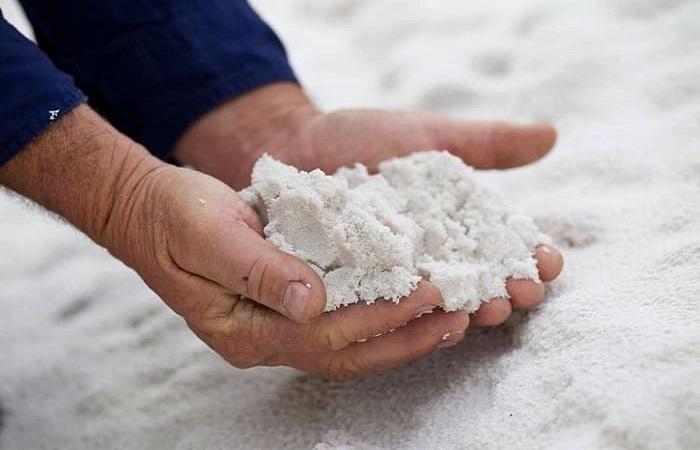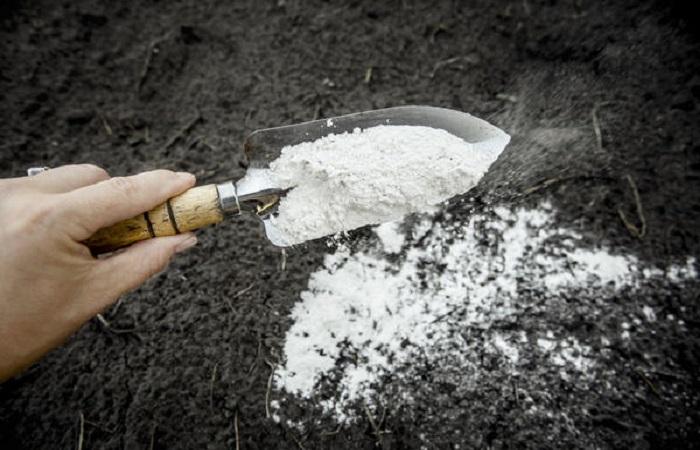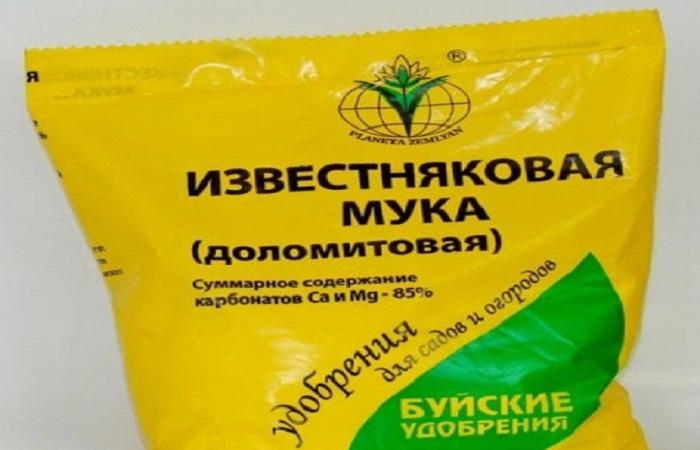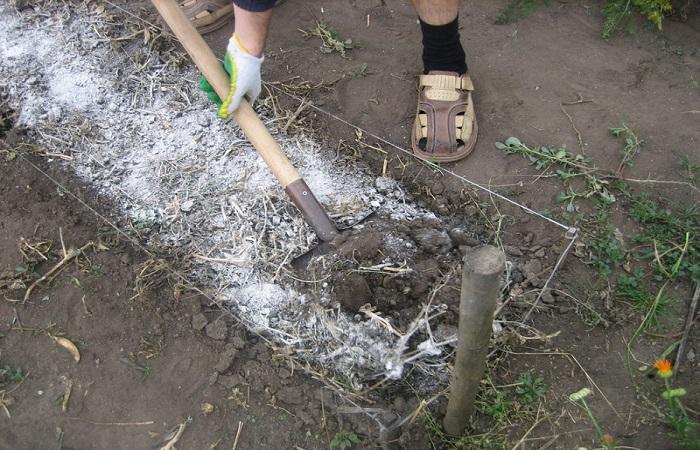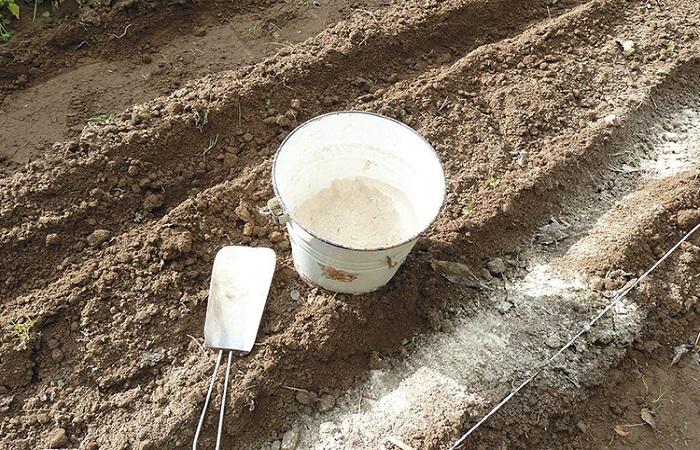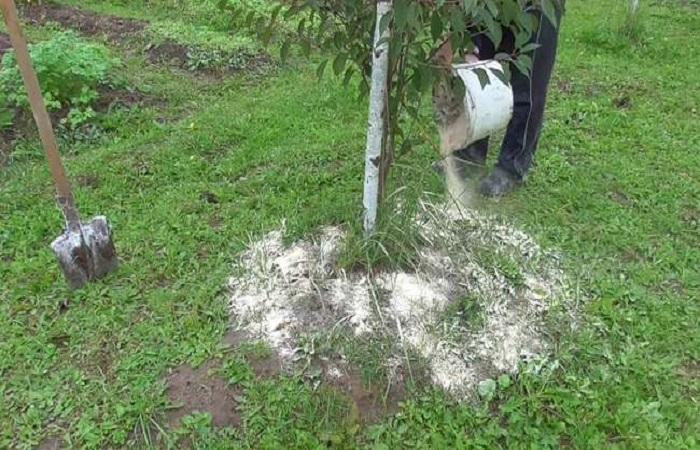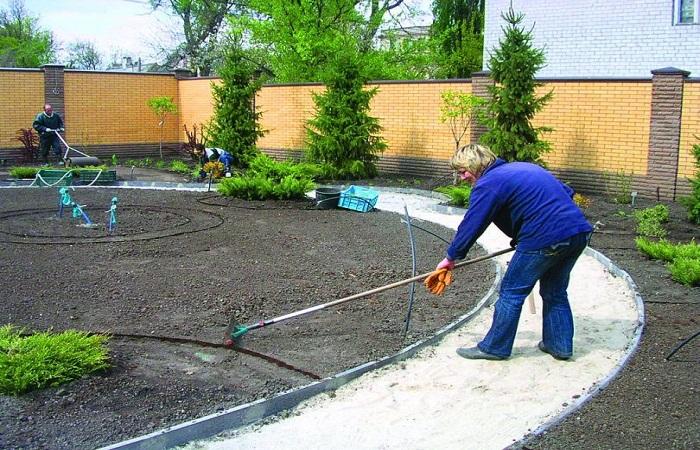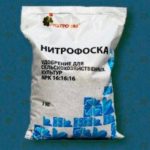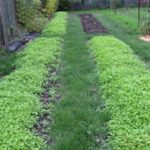When choosing fertilizers for your garden, you must first know the composition of the existing soil on the site. The same fertilizers act differently on different types of soil, so it is important to find out whether the soil is acidic or alkaline. Dolomite flour has many advantages, but its characteristics are most pronounced on acidic soils, stimulating abundant fruiting of cultivated plants and increasing productivity.
What is dolomite flour, composition
If the soil at your dacha is acidic, experienced gardeners recommend using dolomite flour as plant nutrition. Like lime flour, it can deoxidize the soil and make the top layers of soil suitable for the full development of fruit crops.
The instructions for use supplied with the fertilizer by the manufacturer indicate that dolomite flour is obtained by crushing a mineral such as dolomite. When crushed, it becomes similar to flour, as it has a very fine fraction.
Unlike mineral fertilizers obtained artificially, dolomite-based fertilizer does not contain any foreign impurities that can harm human health, therefore it is classified as an environmental preparation.
Dolomite belongs to the group of carbonates, so it is advisable to use fertilizer in order to deoxidize the soil and saturate it with micro- and macroelements, without which one cannot count on a rich harvest. Thanks to the use of fertilizing, it is possible to improve the quality of the top layer of soil and slow down the development of weeds. In addition, dolomite flour increases the activity of annelids, which loosen the soil, simultaneously saturating it with oxygen.
The main components in the fertilizer are magnesium and calcium, which, after entering the fruits, do not accumulate in them, which means they cannot harm humans; they contribute to the full development of crops.
In what cases is it used?
Dolomite flour is used in cases where the soil in the garden is too acidic and only after analyzing the composition. In addition to deoxidation, fertilizer has a lot of useful properties:
- saturates the top layer of soil with calcium, magnesium and nitrogen, subject to constant application;
- improves the structure of the soil and promotes the development of beneficial microorganisms in it;
- destroys insect pests with chitinous cover;
- promotes the purification of fruits of cultivated plants from radionuclides.
You can conduct a soil acidity test yourself without going to special laboratories. There are several simple ways to do this:
- Pay attention to weeds in the area. Weeds, like cultivated plants, have their own requirements for soil composition, and they will not grow and develop in soil that is unsuitable for them. If plantain, woodlice and buttercup are seen in the garden, it means that the soil is acidic, and the addition of dolomite flour will be beneficial and will improve its composition. If coltsfoot, clover and chamomile grow on the site, this means that the soil in the beds is slightly acidic and there is no need to use fertilizer.
- Using table vinegar. Take a handful of soil from the area and pour a small amount of vinegar onto it, observing the reaction. If a large number of bubbles appear, it means that the soil has a neutral or acidic reaction.
- Grape juice. Pour a drink into a glass and add a small amount of earth. If the grape juice has changed its color and bubbles have formed on its surface, this means that the soil has a neutral reaction.
- pH meters. These are special devices that can be used to accurately determine the type of soil on the site.If you don’t have such a device on your farm, you can use litmus paper.
Instructions for use
When planning to use dolomite flour in your garden plot, you must carefully study the instructions so that the use of the fertilizer will only benefit the soil and the crops growing in it.
For potatoes
Potato tubers form best on slightly acidic soils, so if the soil in the garden is acidic, you will have to add dolomite flour. It is better to add fertilizer to the soil in the fall, when the harvest has already been harvested, but it is not prohibited to do this in the spring. To save time, some gardeners scatter flour over the unmelted snow, provided that its layer does not exceed 7 cm, and the area where the potatoes will be grown is flat, without depressions or hills.
The consumption per hundred square meters of powder depends on the degree of acidity of the soil, which is why it is so important to first conduct a soil analysis. Fertilizer calculation is given per 1 square meter:
- 350-400 grams for slightly acidic soils;
- 450 grams for medium sour;
- 500 grams for acidic soil.
If the soil in the garden is heavy and clayey, dolomite flour will have to be used annually to maintain the acidity in an optimal state. On sandy soils, it is enough to carry out this procedure once every 2-3 years. It must be remembered that phosphorus fertilizers and flour cannot be added to the soil at the same time.
For tomatoes
A slightly acidic soil is considered favorable for tomatoes, so it is recommended to use dolomite flour after analysis in the fall. It is scattered over the site and dug shallowly, so that the fertilizer remains in the top layer of soil.The drug can be used not only in open ground, but also in greenhouses. In this case, per square meter you will need 100 grams of flour, which is scattered in a thin layer over the surface of the soil, but not embedded in it.
If tomatoes are planted outside, adhere to the following application rates: 500 grams for acidic, 450 grams for medium-acidic and 400 grams for slightly acidic soils (the amount is indicated per square meter).
Fertilize cucumbers
To deoxidize the soil on which it is planned to grow cucumbers, dolomite flour is often used. In gardening, it is customary to prepare the soil for planting crops in the fall. The earth is dug up, simultaneously adding a small amount of humus and manure. Per square meter of garden, add 500 grams of dolomite flour, which reduces the acidity of the soil, which is necessary for the full development of cucumbers.
For shrubs and fruit trees
Dolomite or limestone flour is used for fruit trees after harvesting. Since fertilizers are applied to trees throughout the entire growing season of crops to stimulate the appearance of ovaries, mineral flour should not be used, since the preparations will interfere with each other’s action.
The powder is spread in a thin layer in the trunk circles of fruit plants; for one adult tree you will need 2 kg of powder.
Fertilize the lawn
It is recommended to use dolomite flour to treat the lawn in the autumn, when all the necessary fertilizers have already been applied. The drug will not only reduce the acidity of the soil, but also improve its structure, and also reduce the number of weeds and pests.It is necessary to use dolomite rather than limestone flour, since it does not interfere with the absorption of phosphorus from fertilizers, but, on the contrary, improves this process.
The powder will be especially useful for lawns where moss and plantain with wood lice grow, since the soil there is very acidic. In this case, 50 kg of dolomite flour is used per one hundred square meters. On slightly acidic soils, it will be enough to add 40 kg of powder.
Dolomite against wireworm
A pest such as wireworm spoils potato tubers, after which they become unsuitable for winter storage. In this case, it is recommended to add dolomite flour at the dacha. This is done once every 3 years, adhering to the dosages given above. For acidic soil, you will need 50 kg of powder per hundred square meters of garden. The substance not only deoxidizes the soil, but also destroys the chitinous cover of the pest, as a result of which it dies.
Security measures
The powder is of organic origin, and therefore does not pose a particular danger to the person carrying out processing using it. Adhere to standard safety requirements - wear clothing that completely covers the body, rubber gloves and a mask so that the powder does not penetrate the respiratory tract and cause irritation.
Compatibility with other substances
Fertilizers containing nitrogen and phosphorus cannot be combined with dolomite flour. There should be at least a week between medications.But the powder is well compatible with copper sulfate and boric acid.
Terms and conditions of storage
If you follow the recommended storage rules, mineral flour retains its working qualities for 5 years. Keep the powder in dry, well-ventilated utility rooms, out of direct sunlight and away from children and animals.
Substitutes
If for some reason it was not possible to purchase the powder, it is recommended to use products with a similar effect on the soil. This can be slaked lime, chalk or wood ash.

